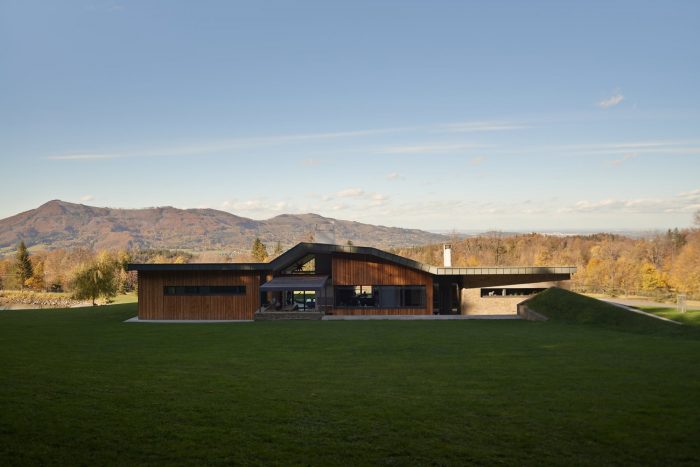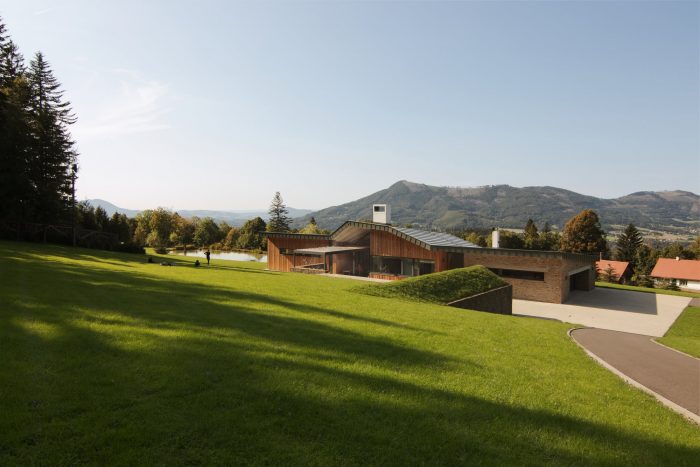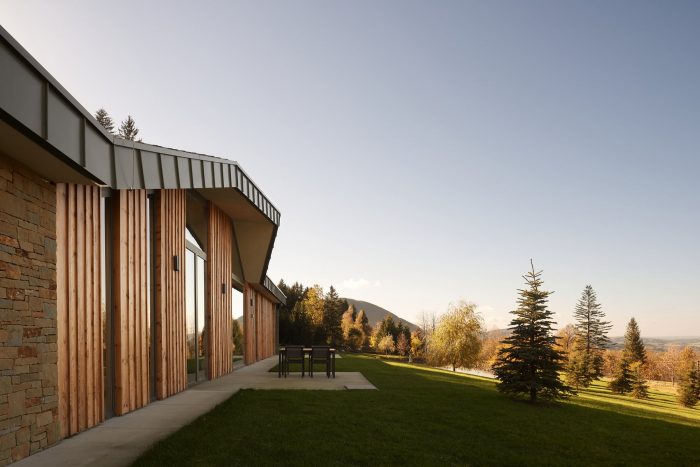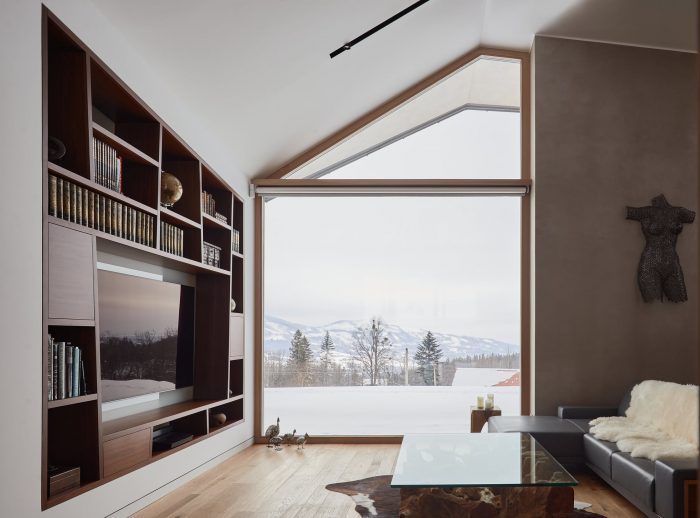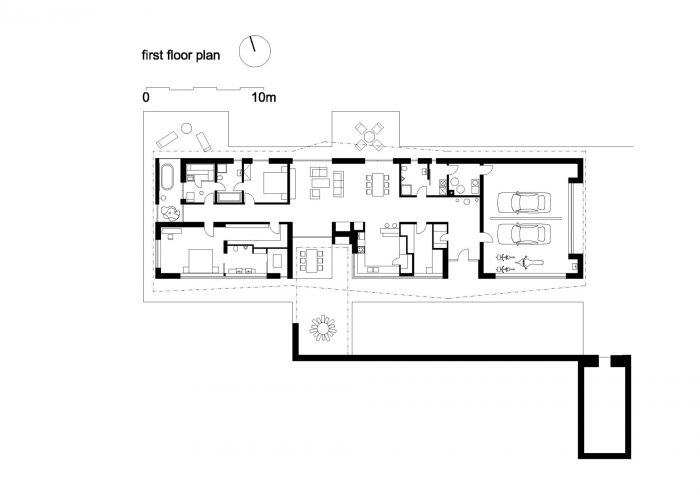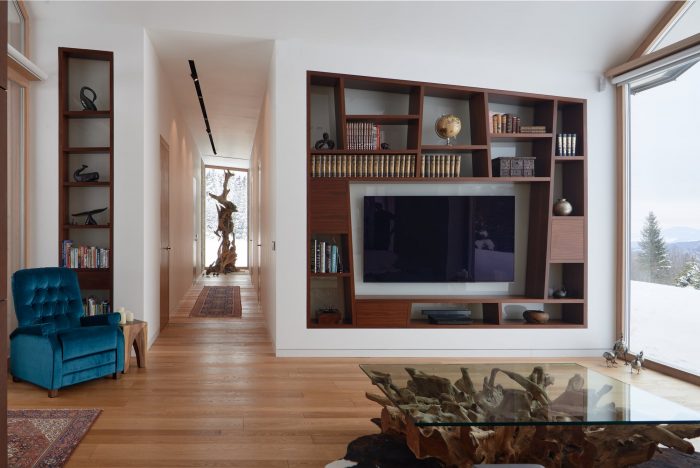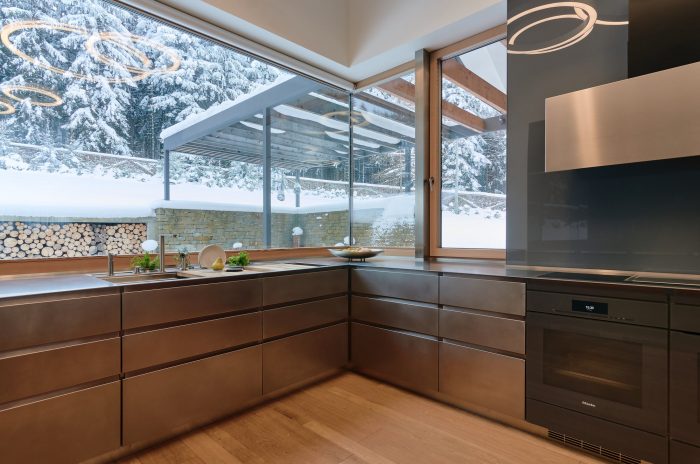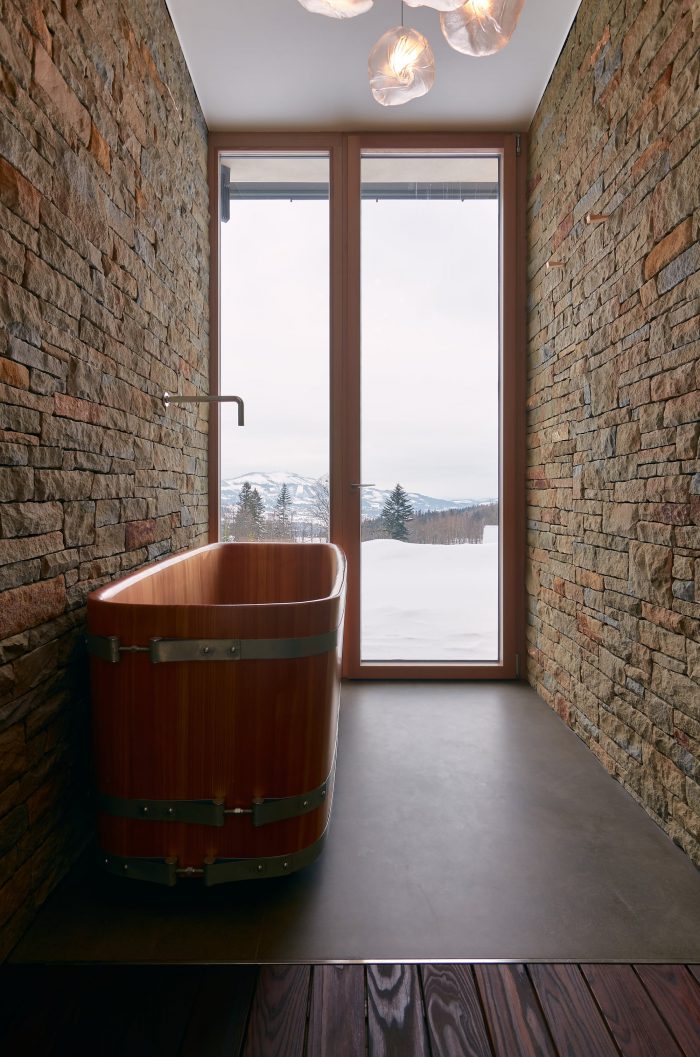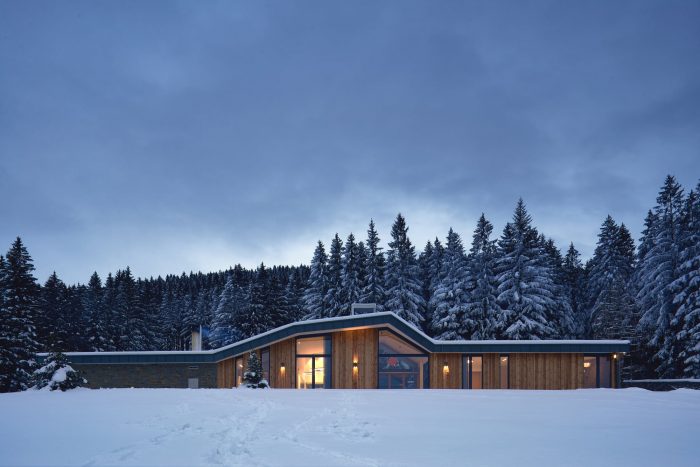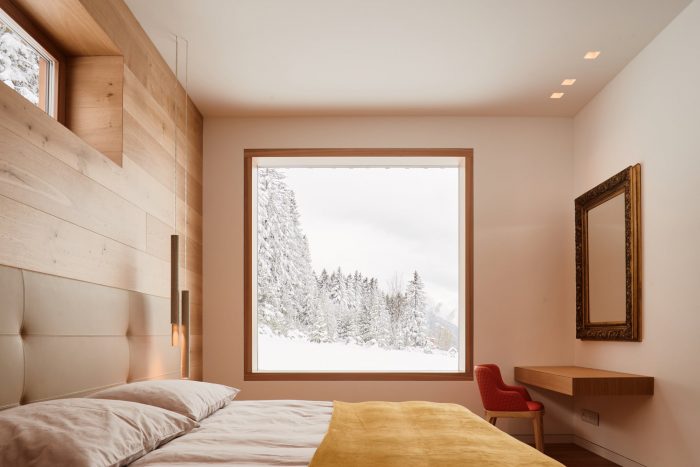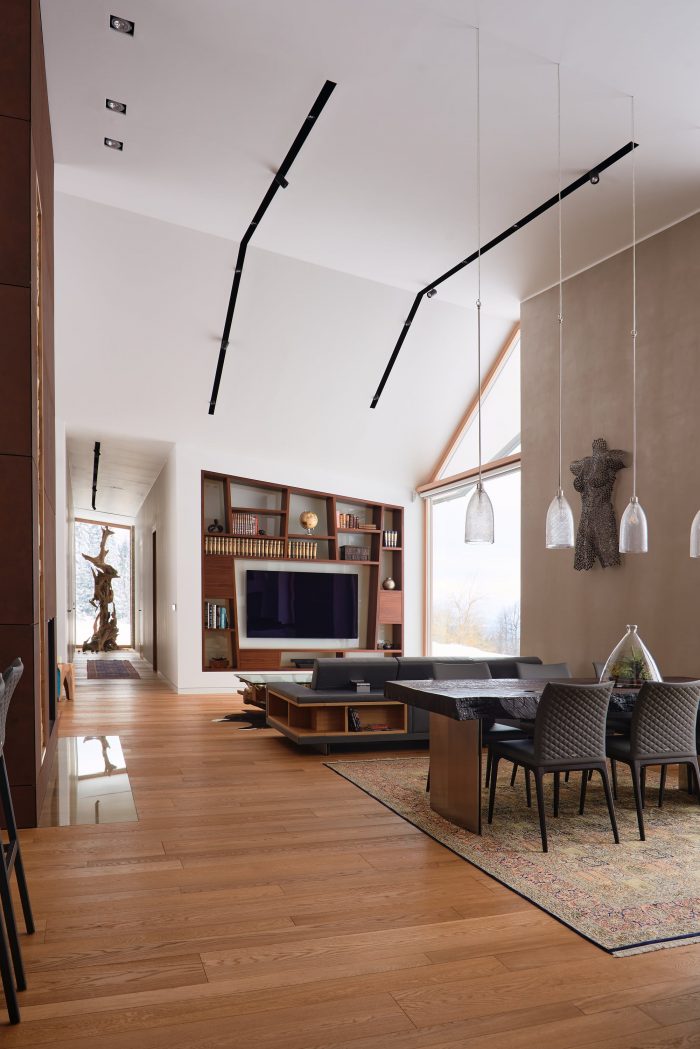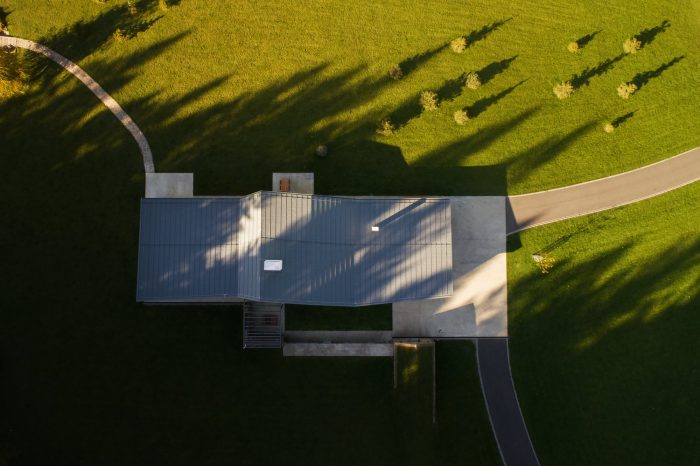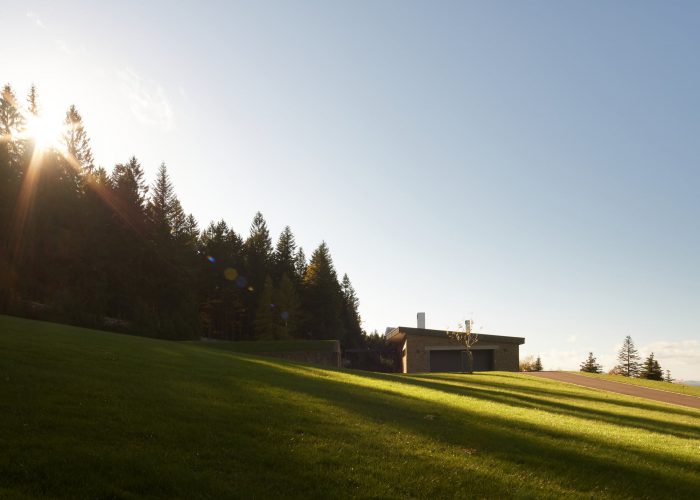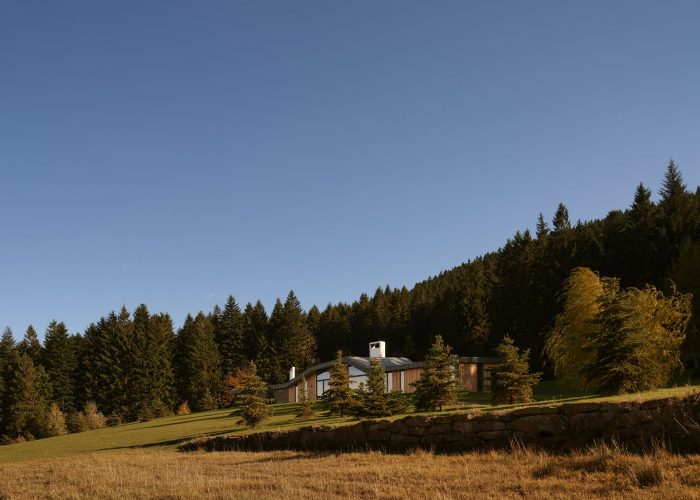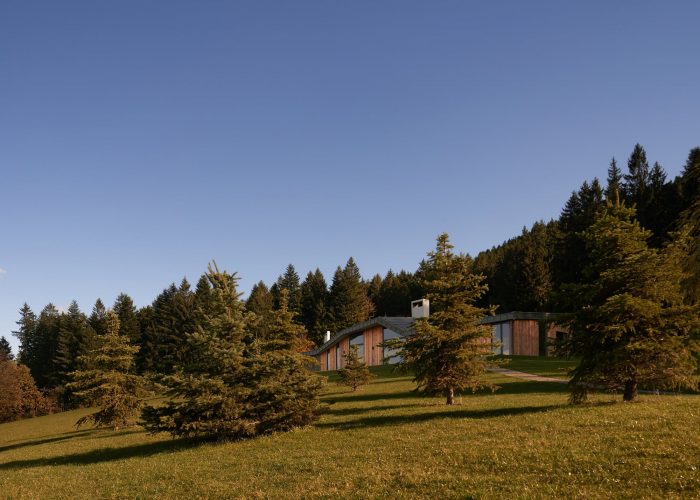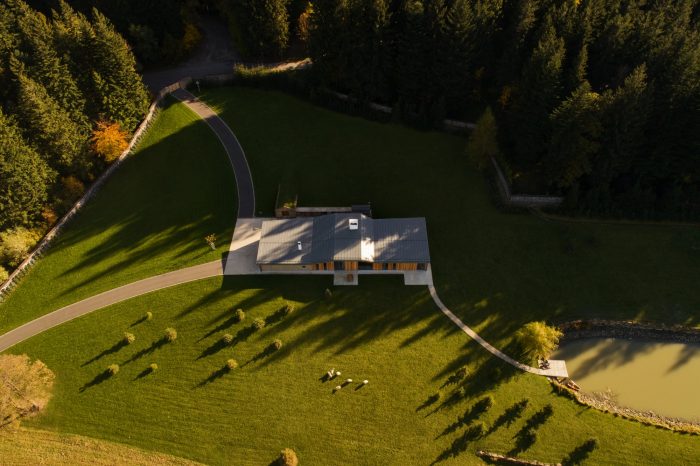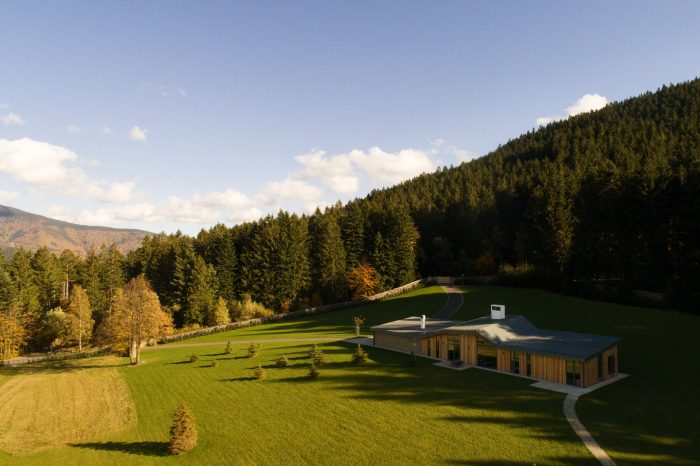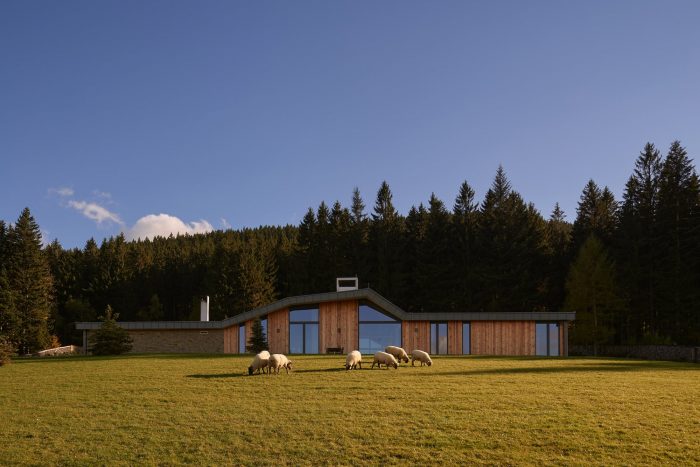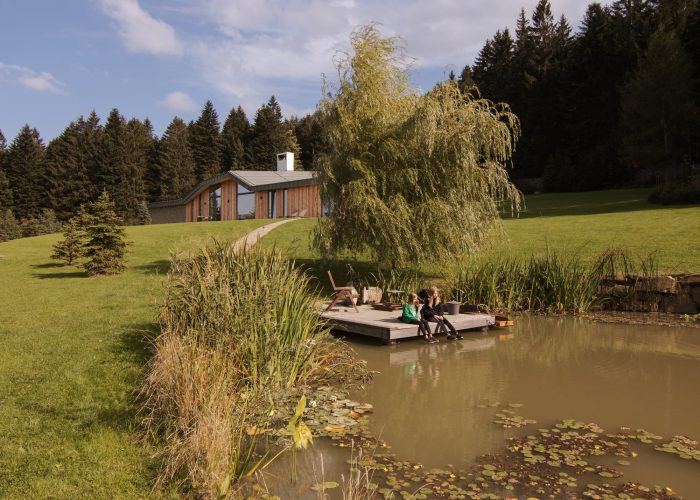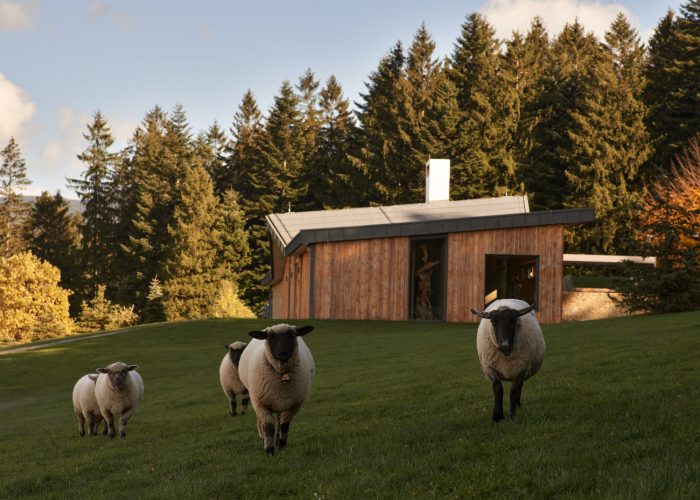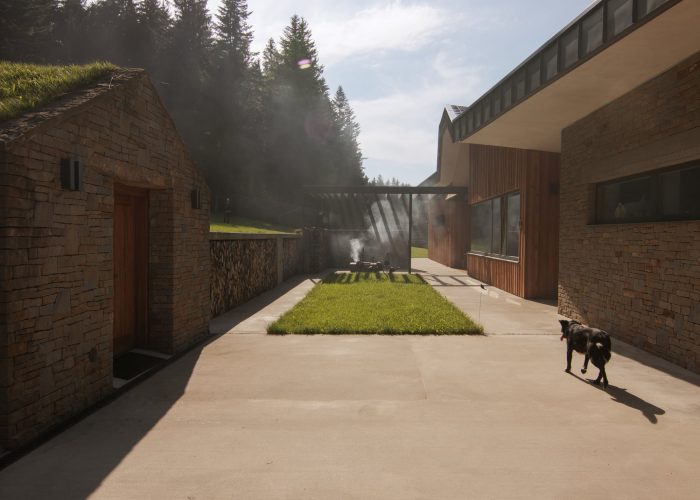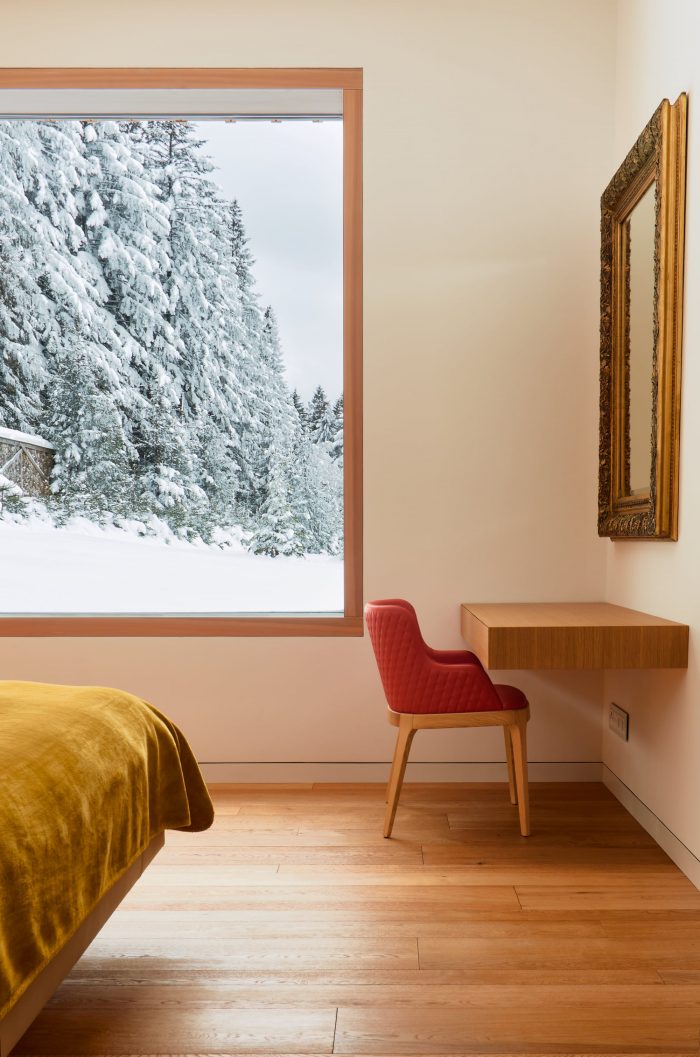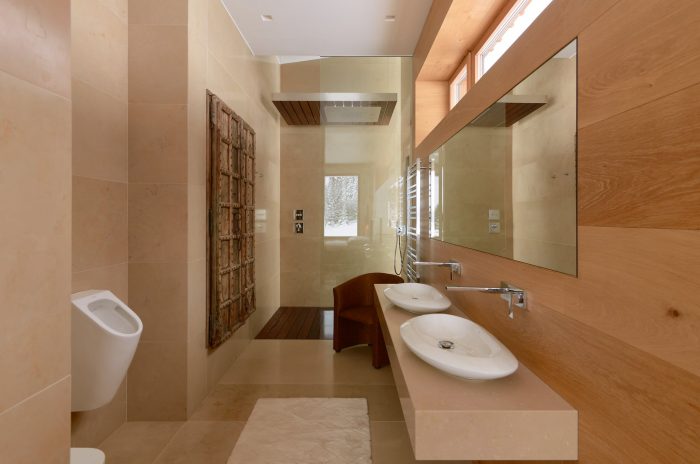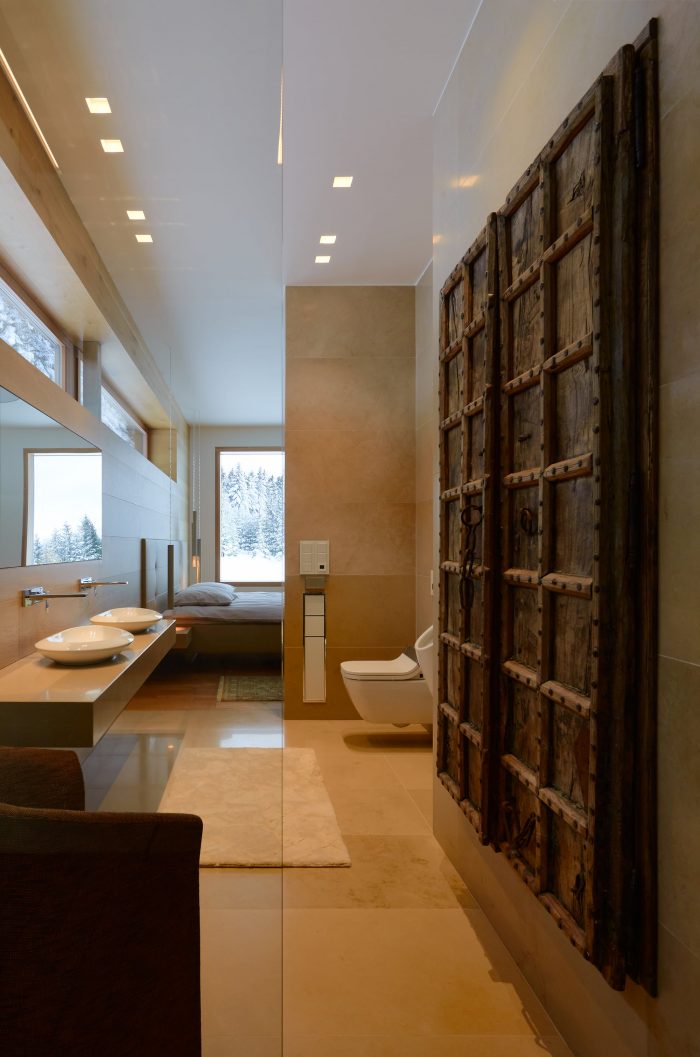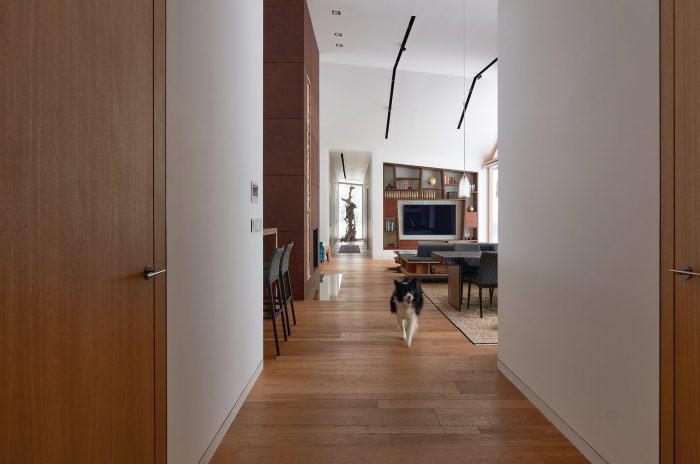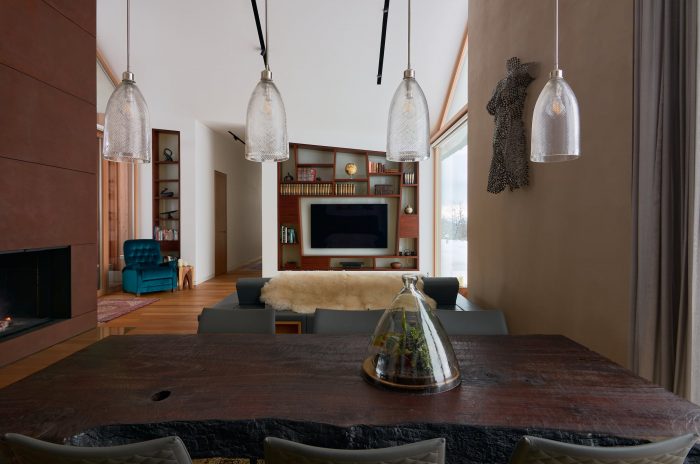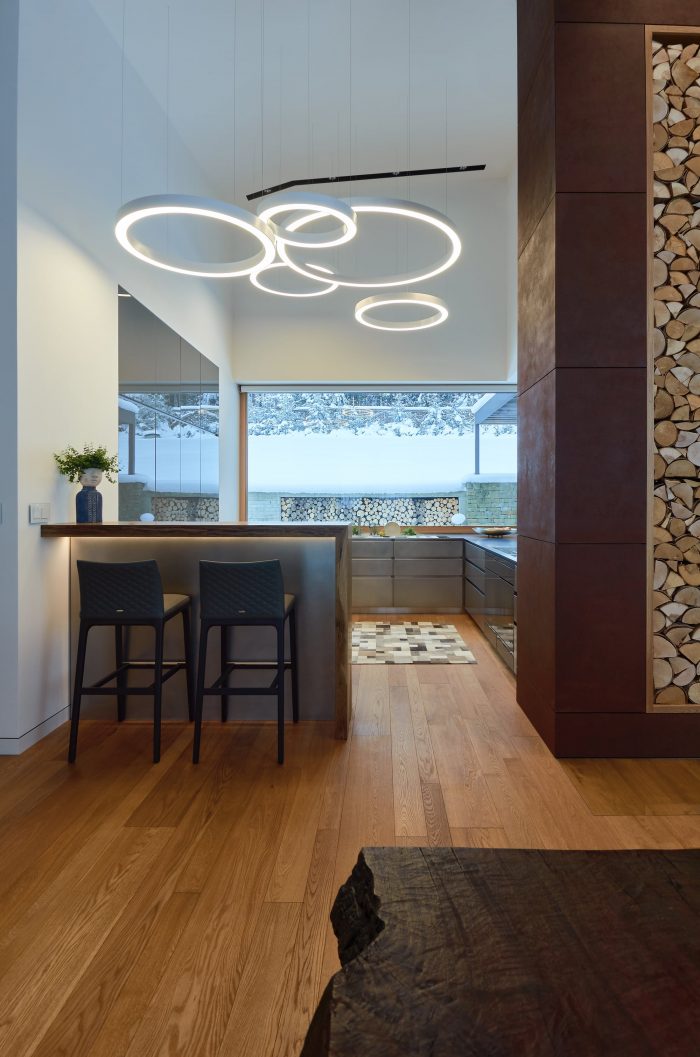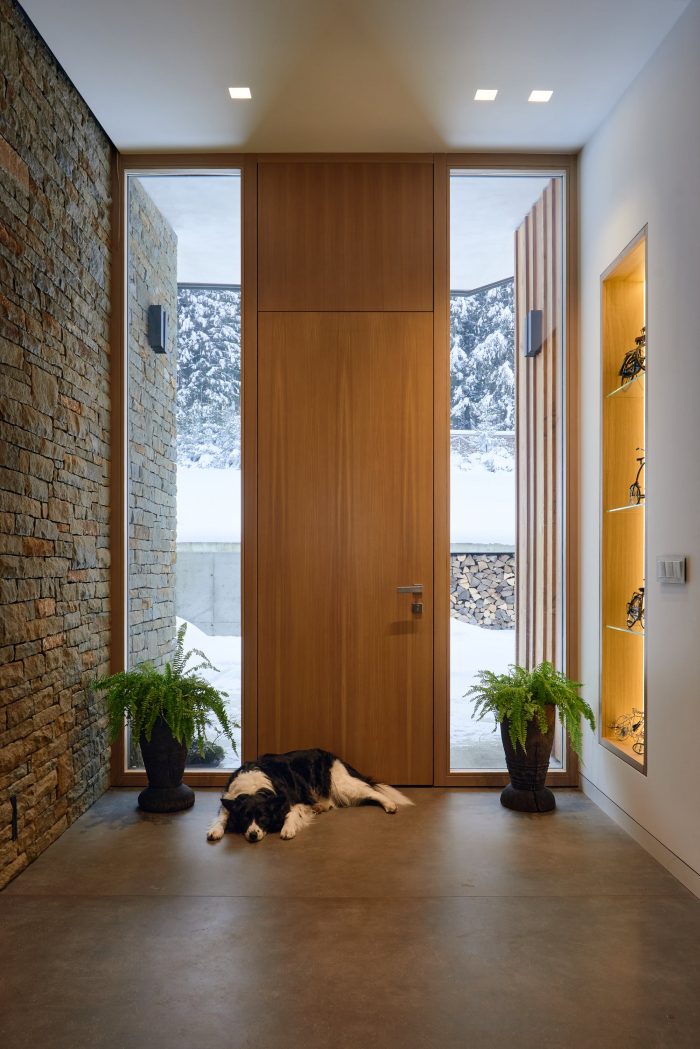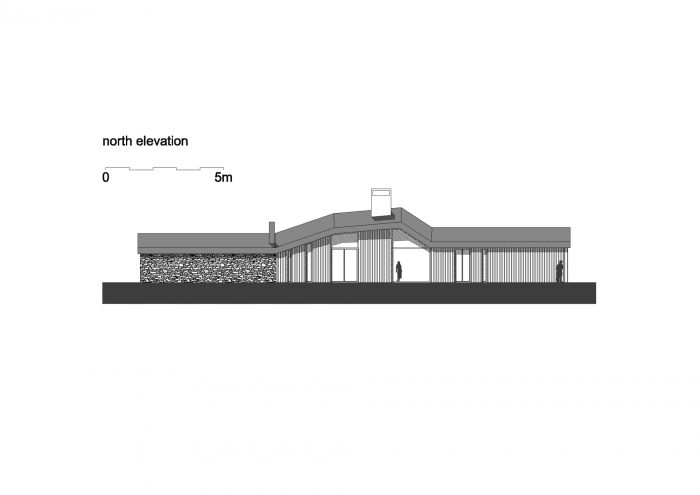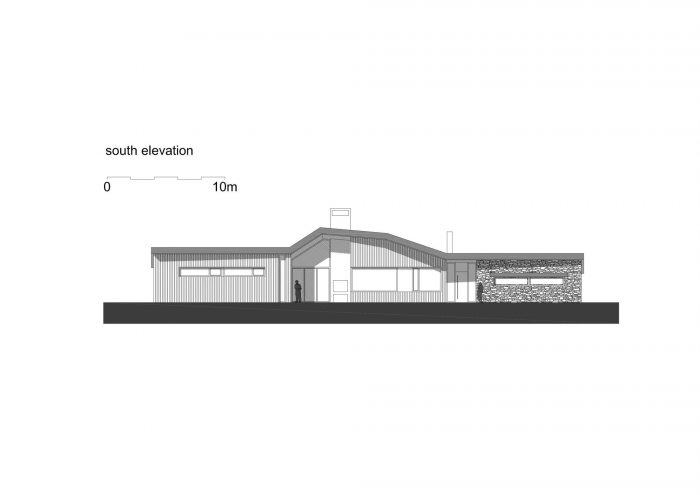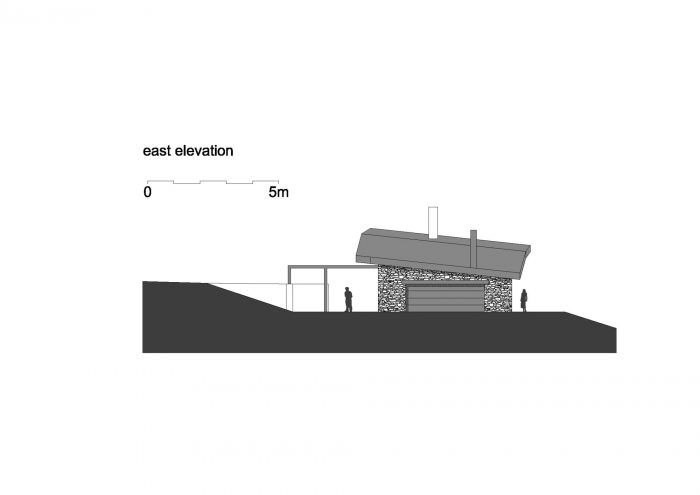这座建筑主要由木质材料和石头组成。它位于大森林边缘的草地上,面积达20000平方米。房子的设计考虑到了它的位置和天气条件,因为它位于海拔600米的半开放景观中,受到西风和东风的影响。除此以外,还有一个壁炉,一个带有休闲区的桑拿房,带有开放式壁炉的室外座位,一个被称为Braai(烧烤)区的室外烤架,以及最后但并非最不重要的,一个石窖。
This building is mostly made from wooden materials coupled with stone. It is centrally situated in a meadow covering an area of 20 000 m² on the edge of a large forest. The house is designed with its location and the weather conditions in mind, as it is situated at an altitude of 600 meters in a semi-open landscape exposed to westerly-easterly winds. Amongst other things, there is also a fireplace, a sauna with a relaxation area, outdoor seating with an open fireplace, an outdoor grill known as a braai (bbq) area, and, last but not least, a stone cellar.
它是由来自奥帕瓦的WMA建筑师建筑工作室(Ing. arch. Adam Weczerek和Ing. arch. Martin Materna)设计。这座房子矗立在景观保护区的城市化区域的边界上。 最初在这个地方,曾经有一个典型的Beskydy木制房屋,有一个18世纪末的谷仓。尽管投资者做出了种种努力,但由于财产被严重破坏,重建该建筑的原计划最终不可行。
It was designed by WMA architects architectural studio from Opava (Ing. arch. Adam Weczerek and Ing. arch. Martin Materna). The house stands on the border of an urbanized area in the Protected Landscape Area. Originally on this site, there used to be a typical Beskydy wooden house with a barn dating from the late 18th century. Despite all the investor’s efforts, the original plan of reconstructing the building turned out to be non-feasible as the property was badly damaged.
目前的建筑很宽敞,尽管它不是作为一个经典的家庭住宅设计的。建筑物的主人只在一年中的部分时间使用它,当他访问他在Beskydy山的故乡时。然而,他有可能在以后的生活中长期定居在这所房子里,这所建筑也反映了这一点。
The current building is spacious, although it is not designed as a classic family house. The owner of the building only uses it for part of the year, when he is visiting his homeland in the Beskydy Mountains. However, it is possible that later in life he will settle in the house on a permanent basis, and the building also reflects so.
房子的设计使内部与外部融为一体,因此整个居住空间都有大玻璃窗,给人以宽阔的印象。投资者的主要意图是保留原始Beskydy建筑的 “精神”,这些建筑被称为Pasekářs,在19世纪在该地区很常见。
The house is designed so that the interior blends in with the exterior, and thus the entire living space features large glass windows which give the impression of wide-open spaces. The investor’s primary intention was to preserve the “spirit” of the original Beskydy buildings, known as Pasekářs, which were common in the area during the nineteenth century.
该建筑使用落叶松木材和当地的石头建造。大树干是在冬天在森林里砍伐的,储存了几年以备干燥,然后用当地19世纪的机器切割,现在仍在运行。石材也是如此。内部使用的材料与外部相同,但它们被与主人过去生活有关的独特的单独特征所补充。例如,房子的视线轴被一棵最初来自非洲的孤独的树干所支配。
The building was constructed using larch wood and locally sourced stone. The large trunks were felled in the forest during the winter, stored for several years to dry, and then cut on a local 19th-century machine that is still operational. The same goes for the stone. The interior uses identical materials to the outside, but they are complemented by distinctive solitary features that relate to the past life of the owner. The view axis of the house, for instance, is dominated by a solitary tree trunk, originally from Africa.
主浴室的瓷砖是由意大利南部的天然石灰石制成的。业主自己在当地的采石场选择了瓷砖的材料,然后由当地的公司按照建筑师的设计将石头切割成大小并加工。对各个部分进行编号,运到建筑工地,然后进行组装。在这一点上,应该指出的是,整个项目在财务方面,与最初计划用当时捷克市场上的顶级瓷砖铺设浴室的价格相比,仅仅是一个零头。
The tiles in the main bathroom are made from natural limestone from southern Italy. The owner chose the material for the tiles himself at the local quarry and the stone was then cut to size and worked by a local company following the architect’s design. The individual parts were numbered, transported to the building site, and assembled. At this point, it should be noted that the whole project was, in financial terms, merely only a fraction of the price compared to the original plan of tiling the bathroom with top-of-the-range ceramic tiles available on the Czech market at the time.
房子的一个非典型特征是卧室里的方形窗户。在其他房间,窗户从地板一直延伸到屋顶。它的设计也很特别,坚实的落叶松木框架穿过墙壁,从而形成了一幅模拟的林地风景和池塘的画面;这幅 “画面 “随着季节的变化而变化。所有的室内门都有2.6米高。
One atypical feature of the house is the square window in the bedroom. In the other rooms, the windows reach from the floor up to the roof. Its design is also unusual, with the solid larch-wood frame passing through the wall, thus creating a simulation of a picture with the woodland scenery and the pond; this “picture” changes with the seasons. All the interior doors are 2.6 m high.
它们与墙壁和隐藏的门框平齐。WMA的建筑师们喜欢极简主义,所以在设计室内时,他们摒弃了各种可能积灰的突出部分。这意味着没有很多突出的主导元素,这也是投资者的想法。门窗的宽大高度意味着空间不会给人以过大或不舒服的印象。
They are flush with the wall and the hidden door frames. WMA architects love minimalism, so when designing the interior, they did away with various protruding parts that could collect dust. This means that there are not many dominant elements that stand out, which was what the investor had in mind. The generous height of the doors and windows means that the space does not give the impression of being too large or uncomfortable.
Architects: WMA architects
Area : 345 m²
Year : 2020
Photographs :Jiří Alexander Bednář
Manufacturers : Form Design, Matys Pasirstvi, Okna Jánošík
Lead Architects : Adam Weczerek, Martin Materna
Construction Company : Beston s.r.o.
Co Authors : Renata Valentová, Jan Homola
Project Planning : Adam Weczerek, Martin Materna, Renata Valentová, Jan Homola
City : Čeladná
Country : Czech Republic


